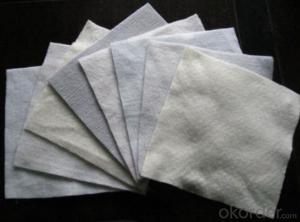When I first read “vi 20 geomembrane,” I was fascinated by its cryptic sound – it seemed like something directed from a science fiction book about the material that could alter the world. However, going through this topic, I realized that it is of great importance and has diverse applications.
The Main Points about the VI 20 Geomembrane
VI 20 geomembrane is a type of HDPE (high-density polyethylene) geomembrane, which is specifically designed to offer better performance in different environmental and engineering applications. Its remarkable ability to resist chemicals, UV-rays, and mechanical stress makes it perfect for any durable projects.
Applications and Advantages
One major application of VI 20 geomembrane is in construction of reservoirs for water storage and dams. It ensures effective retention of water because it does not allow any liquid or gas to pierce through. It also provides strength and flexibility that allows it to conform to contouring terrains. This enhances structural integrity of the project hence its?longevity.
Apart from water management, VI 20 geomembrane is commonly used as lining or cap in landfills where its role as a barrier prevents leakage of hazardous materials into the environment. The fact that it can withstand harsh conditions without deteriorating over time makes it suitable for such sensitive functions.
Installation Process and Maintenance
VI 20 geomembrane installation process is quite simple being carried out by rolling out the material then fastening with appropriate fasteners. A successful installation process lies in details; thus no wrinkles or folds should be allowed to compromise seal integrity.
VI 20 geomembrane has low maintenance requirements as they rarely wear or get damaged easily. Despite this fact, regular check-ups are still important as they help identify problems at an early stage like leaks caused by puncture or external factors among others. Quick response on these issues can make the life longer for this material ensuring high performance.
Environmental Impact and Sustainability
VI20 geomembrane has minimal impact to the environment as it is made from non-poisonous materials with a low carbon footprint. Additionally, its long life means that it does not have to be replaced often resulting in lower overall environmental impact of the projects where it is used.
Sustainability underpins the design philosophy behind VI 20 geomembrane. Its durability and resistance towards degradation reduce maintenance need and replacement requirement, thereby reducing demand for raw materials and energy. This is commensurate with the ongoing global trend of sustainable development whereby there’s a need to minimize our ecological footprints.
Personal Reflections
My journey through VI 20 geomembranes got me mesmerized by how this material was crafted. It’s more than just a plastic sheet; it’s an example of human ingenuity in solving some of our biggest environmental problems today.
CONCLUSION
To conclude, the VI 20 geomembrane has truly captured my imagination and I find myself musing about its possible applications in different sectors. The range of uses for this material from farming to waste management is astonishing and I am looking forward to its further development as it becomes more sustainable.
Conclusion
In conclusion, it is a fantastic product that has found favour with engineers and environmentalists alike. With its peculiar features plus a wide range of use cases, this material is an asset towards achieving a sustainable world. The VI 20 geomembrane continues to be an exemplar of how science can intersect with sustainability as we attempt to keep on discovering and pushing limits further.







